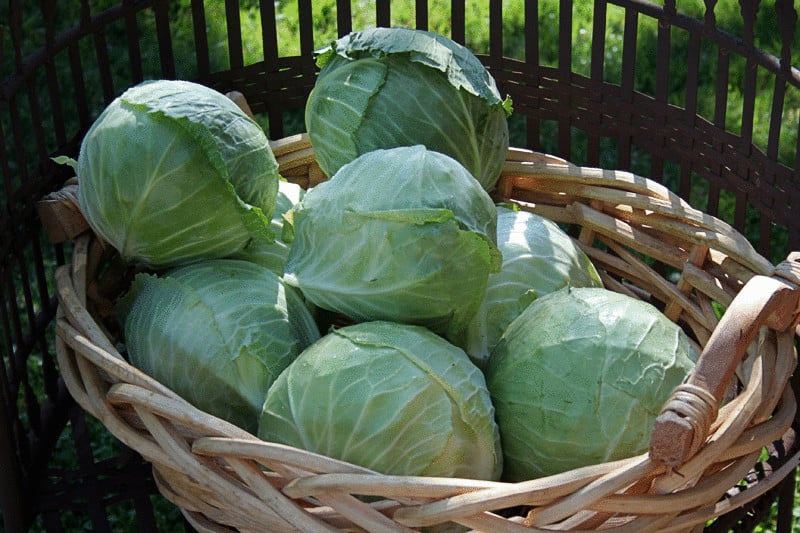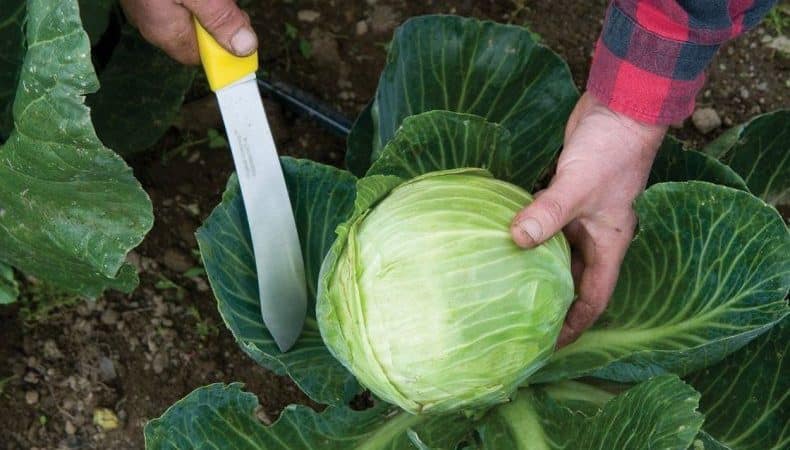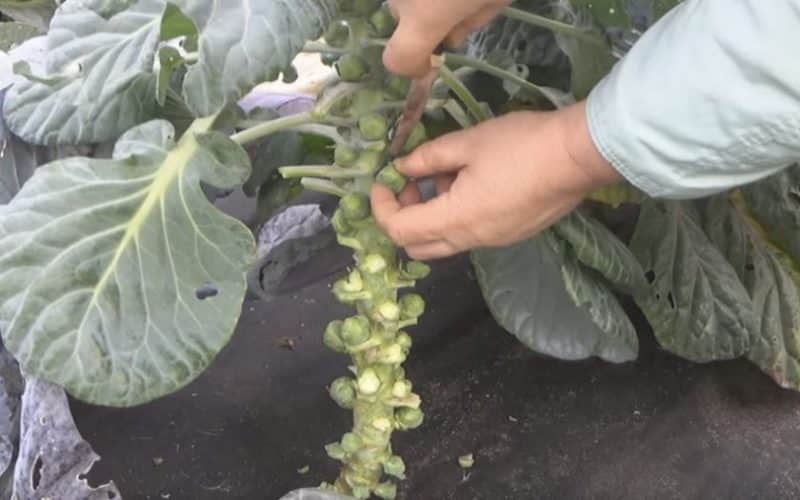When and how to remove cabbage from the garden
Cabbage is an unpretentious vegetable crop. However, when growing it, it is important to follow all the rules of agricultural technology. This applies not only to planting and further care, but also to the date of harvesting from the beds. Untimely harvesting will harm the heads of cabbage and significantly reduce their shelf life. You will learn from the article when to remove cabbage, including late cabbage, from the garden.
When to remove cabbage from the garden
Many gardeners strive to start harvesting heads of cabbage as soon as they grow to the proper size. Typically, such mistakes lead to loss of harvest, since prematurely cut vegetables do not have time to fully form and have a loose structure. Specimens cut too late crack and quickly deteriorate.

The timing of harvesting heads of cabbage for long-term storage is determined by a number of factors, so it is difficult even for an experienced farmer to give an exact date, but it is worth considering the following:
- climatic features of a particular region;
- possible weather anomaly;
- the specifics of the ripening of the cultivated variety (timing of sowing seeds and picking seedlings), as well as their tolerance to frost.
Before harvesting, all forks are checked for full ripening. The ripeness of a vegetable crop is indicated by many signs, and they are individual for each variety.
However, there are several common characteristics:
- hard and strong heads of cabbage;
- fixed value, cessation of growth;
- the appearance of yellowness and dryness on the crown;
- fading of leaves.
When ripened, cauliflower and broccoli are distinguished by elastic and dense inflorescences. The leaves of these crops become brittle and break when bent.
When is the best time to remove cabbage from the garden for the winter?

During the period of cabbage ripening, climate plays an important role. Cool and humid conditions are preferred for growing this crop. In this case, the vegetable quickly forms and ripens. In too hot and dry summers, the heads of cabbage stop growing and the harvest date is postponed.
The time of planting seedlings in open ground also depends on the climate: in the south of the Russian Federation this procedure is possible as early as May, in the north – in June. Accordingly, the ripening of vegetables in northern areas is observed later.
Depending on the duration of development, cabbage varieties are divided into 3 types:
- early;
- mid-season;
- late.
Early varieties ripen within 100 days from the day they are sown in the soil, and harvesting dates usually occur in mid-July - early August.
Important! Early varieties are not suitable for winter storage and do not tolerate late harvesting due to rapid cracking after ripening.
For full ripening of mid-season and late species it will take about 150 days. This type of cabbage can be stored for a long time and is suitable for pickling; its heads are cut at the end of September - beginning of October. Late varieties are harvested before the onset of severe frosts, thus increasing their shelf life.
Specific dates are recommended for cutting each type of vegetable crop.
Early and late-ripening types of cabbage varieties in different regions are harvested as follows:
- in the northern part of the Russian Federation - from mid-September;
- in the middle zone - from the end of September or early October;
- in the southern part - from mid-August, in rare cases - in the first days of September.
Red-headed species are harvested as each head of cabbage matures (reaches the required density). In southern areas with mild winters, the harvest is harvested until mid-November, in the northern regions - until the first half of September, in the middle zone - from late September to mid-October. The cultivation of heat-loving broccoli is carried out mainly in the southern regions. The inflorescences are cut off as they ripen, usually from mid-August to the end of September.
Varieties cauliflower collected immediately after the formation of dense forks.
In each part of Russia this happens at different times:
- in the middle zone - during August and September;
- in the southern territories - from the beginning of July to the first days of August.
In the northern regions, cauliflower is grown only in greenhouses.
Brussels sprouts in the middle zone they are cut down in the fall - in mid-September, in regions with a warm climate - at the end of August.

At what temperature should cabbage be stored?
When to store cabbage:
- It is unacceptable to leave heads of mid-season and early varieties in the garden at temperatures below -3°C, since frozen vegetables have a significantly reduced shelf life.
- Before harvesting, frozen specimens are left standing for 5-6 days so that they have time to thaw before storage.
- At a temperature of -4°C, varieties grown for pickling improve their taste: their leaves become sweeter.
When to remove late cabbage from the garden
By November, the harvest of late varieties accumulates a large amount of useful elements and vitamins and is characterized by maximum shelf life.However, you should not delay its collection, since the abundance of precipitation at this time leads to cracking and rotting of the heads of cabbage.
Cleaning time

Winter cabbage is removed from the garden approximately 150 days after sowing. It is characterized by good keeping quality and is suitable for fermentation. In the Moscow region, late cabbage is cut in mid-October, in Siberia - from September 1 to 20, in southern latitudes - in the second half of October.
Frost-resistant savoy cabbage is harvested in the last days of November. It easily tolerates temperatures down to -8°C. Only in the northern regions is this variety removed from the garden no later than October.
Brussels sprouts are resistant to temperatures down to -10°C. The period of its maturation in the central zone of the Russian Federation begins in late September, in Siberia - in early December.
At what temperature should I cut for the winter?
According to many gardeners, the harvest should be harvested before the first frost, but this is not true. There are many frost-resistant varieties of white cabbage that can easily tolerate temperatures down to -6°C.
Important! It is recommended to harvest late cabbage varieties at a time when the temperature drops to -4...-5°C at night and does not exceed +8°C during the day.
Conclusion
The storage duration and taste of the cabbage heads depend on the correct date for harvesting cabbage. Deciding on the harvest time is not very difficult: it is important to take into account the climate of a particular area and the ripening characteristics of the cultivated varieties.